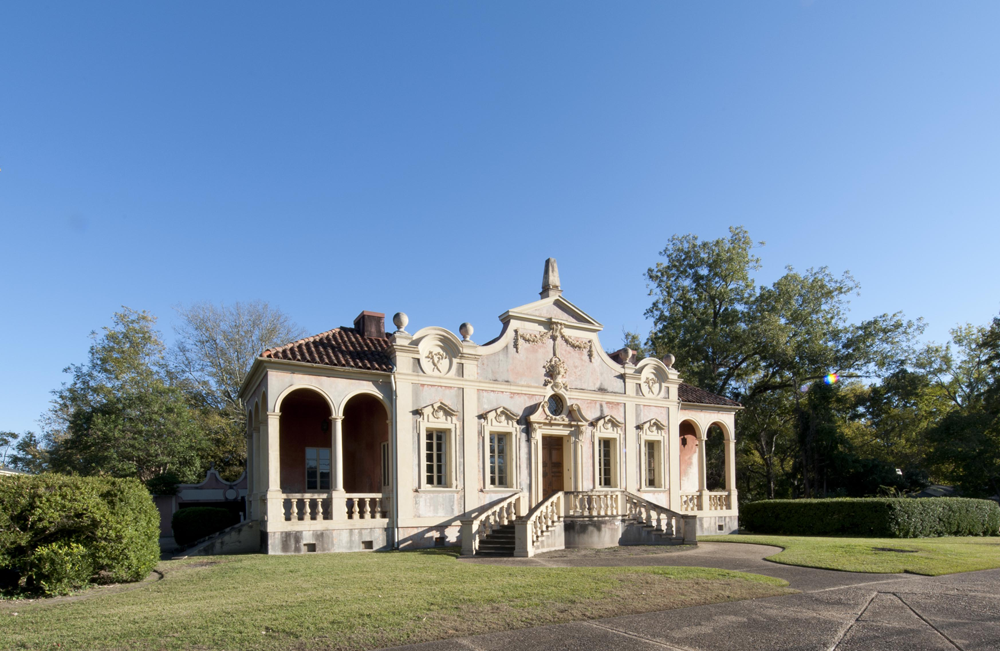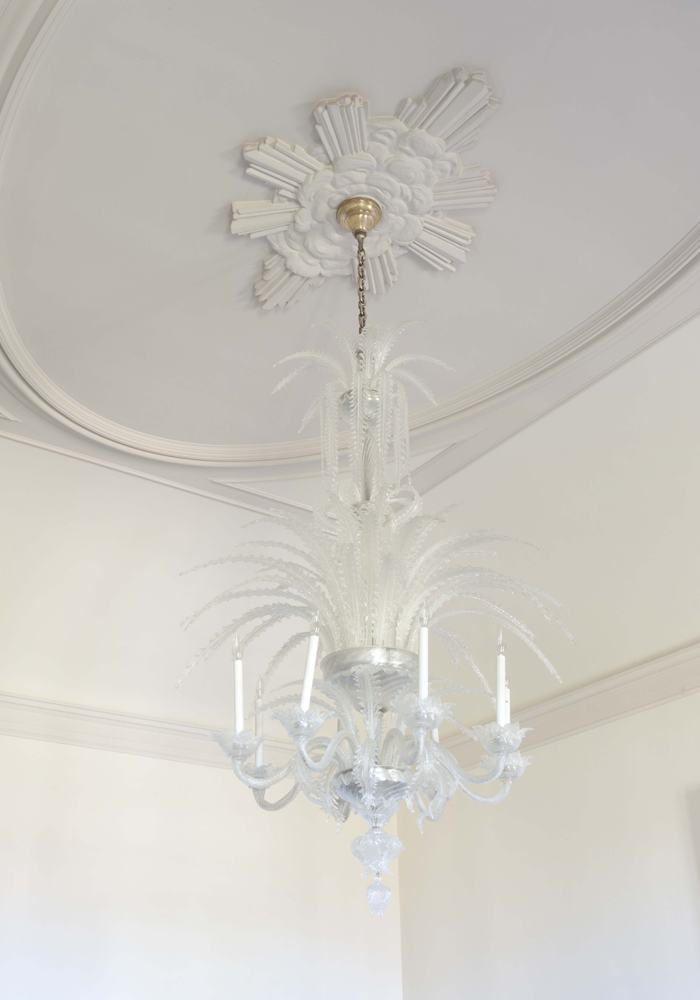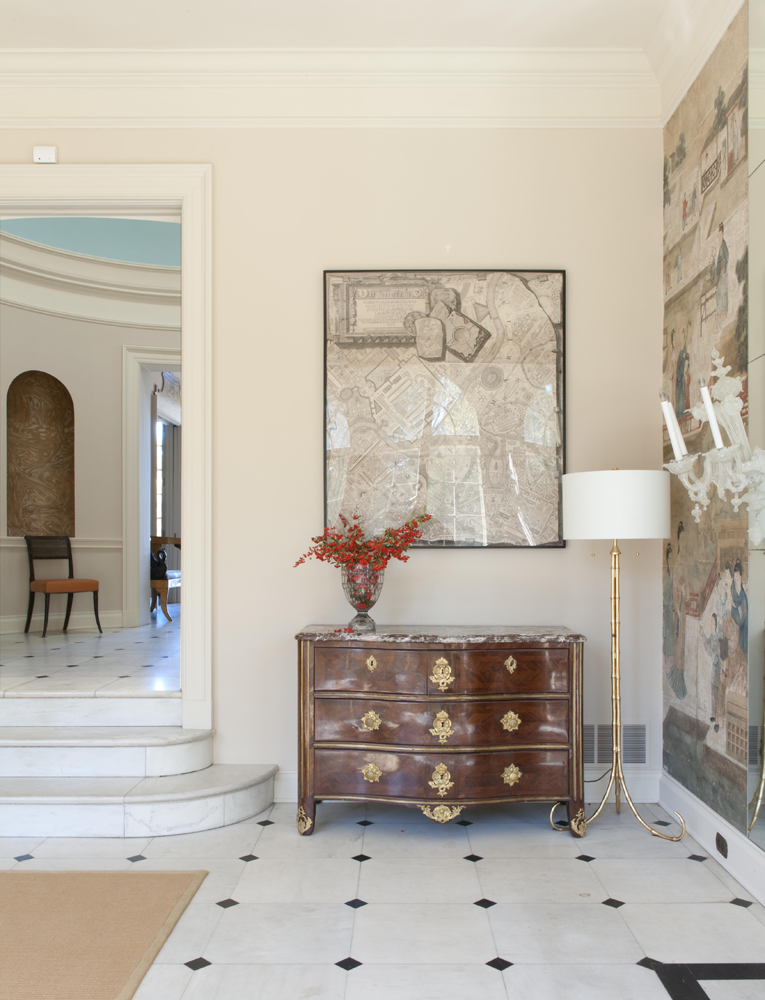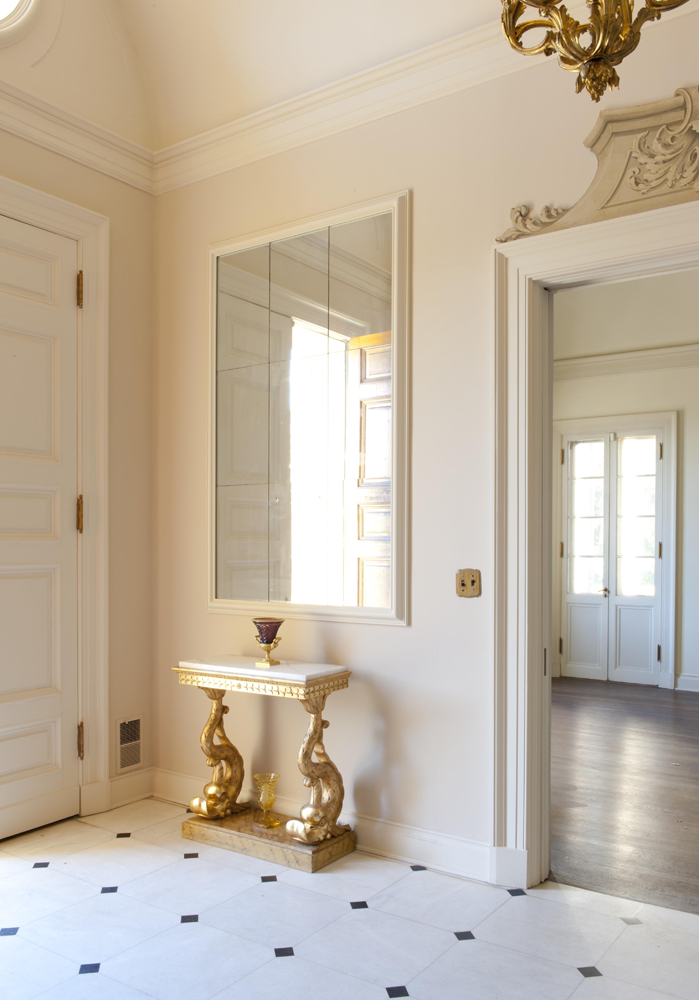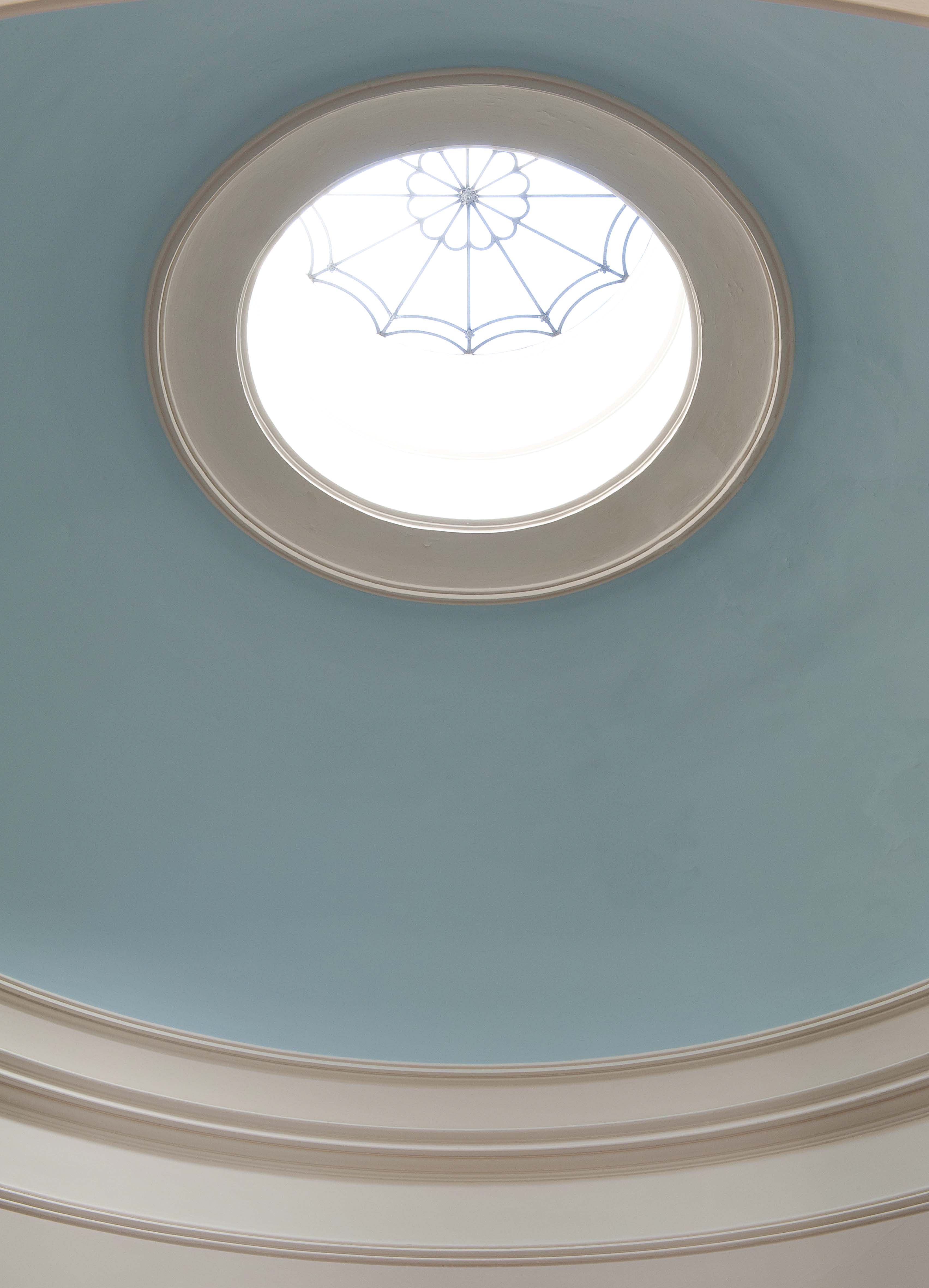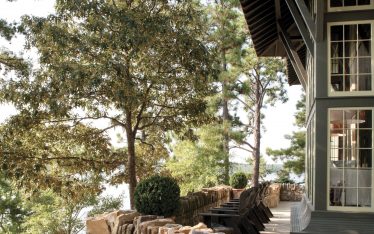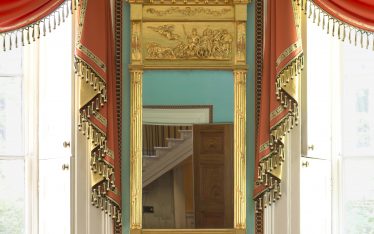An oculus window is not witnessed from the exterior of a house, nor does it frame a view, except of sky. The ancient architects’ equivalent of a canned ceiling light, it is intended to illuminate rooms from above. Unlike canned lighting, however, the oculus also offers decorative potential, as in the case of this one found in a 1920s residence in Macon, Georgia. Designed by architects Philip Trammel Shutze and Neel Reid, the Italian baroque-style villa known as Villa Albacini contains a serene rotunda whose Federal-style oculus features graceful leading. While to one person, it might resemble a cobweb, to another, the delicate tracery might suggest the iris of an eye. Any way you look at it, the oculus–a word that means eye in Latin–is an eye-catching detail. Scroll down to see more images of the beautiful and mysterious Villa Albacini, featured in my book Past Present: Living with Heirlooms and Antiques.
